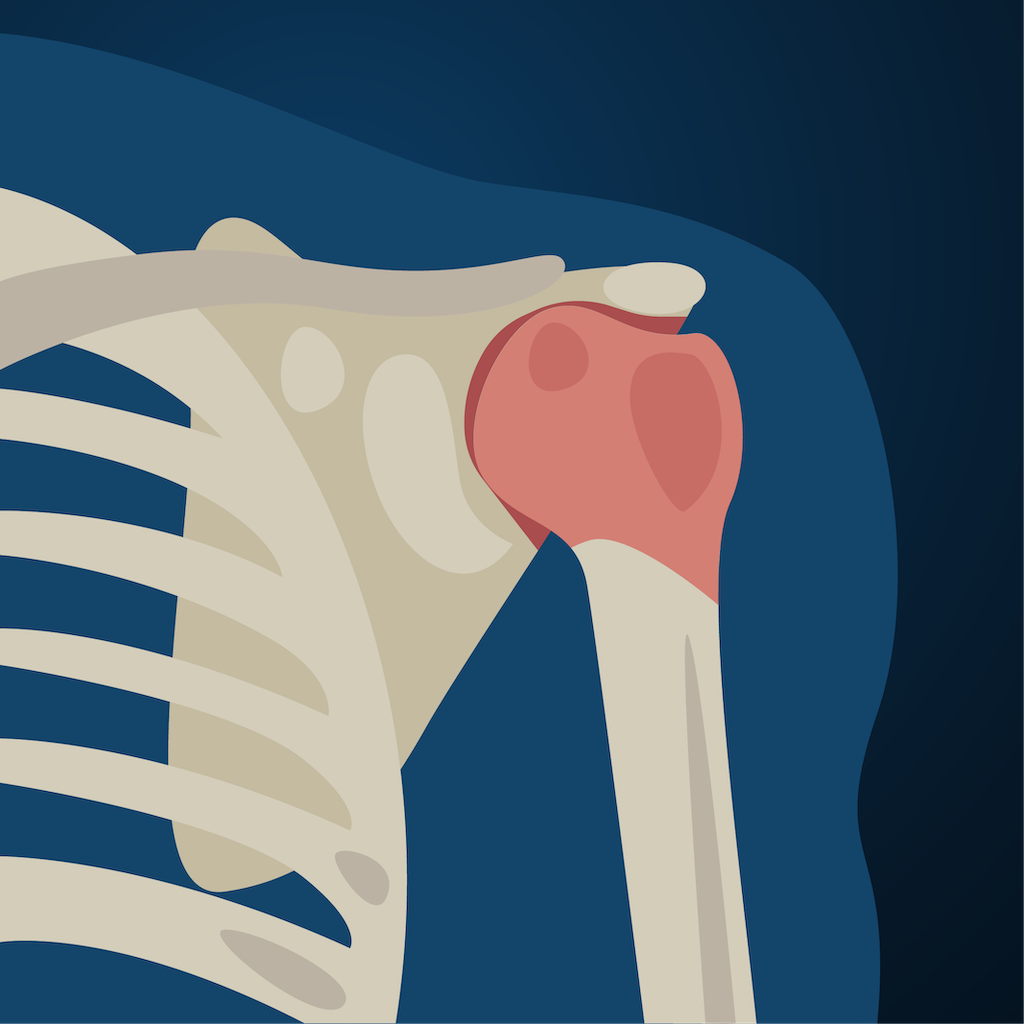
Shoulder Injuries
Shoulder Injuries
Injuries can be stressful and scary, which is why we’ve compiled a list of common injuries we treat.
Accompanying this list are the details of the relevant injury, its treatment, and answers to frequently asked questions. Hopefully, these details will offer you some peace of mind while also educating you about what to expect. Whatever your injury, Dr. Jones is experienced and ready to help you get back to your active lifestyle.
Shoulder Arthritis
Shoulder arthritis is a condition that occurs when the cartilage of the shoulder joint deteriorates and becomes rough, leading to pain and loss of range of motion. The most common type of arthritis is osteoarthritis, which usually results from age-related cartilage degeneration. This type of arthritis is progressive and worsens over time, and bone spurs develop as the joint becomes more painful with a range of motion. Another type of arthritis is post-traumatic arthritis, which often occurs in younger patients and is initiated by a traumatic event that damages the cartilage surface.
Initial treatment for shoulder arthritis is usually conservative, involving non-steroidal anti-inflammatory medications and physical therapy to help the patient improve range of motion and functional use of the shoulder. Dietary supplements, such as glucosamine and chondroitin, have also helped some patients’ symptoms. If these measures fail or the arthritis is very advanced, surgery may be necessary. Arthroscopy may have a role in treatment when the arthritis is not advanced, while shoulder joint replacement is an option in more severe cases. Shoulder replacement is a technically demanding procedure that should be performed by a surgeon with extensive experience.
If you are experiencing symptoms of shoulder arthritis, including pain and loss of range of motion, it is important to seek medical evaluation. Dr. Jones specializes in shoulder replacement and has performed hundreds of successful surgeries with excellent outcomes. Contact his office to schedule an evaluation and determine the best course of treatment for your specific condition.
Shoulder Instability
Shoulder instability is when the shoulder experiences pain and becomes unstable, leading to either partial (subluxation) or complete (dislocation) dislocation of the ball from the socket. Shoulder ligaments connect bones and are responsible for keeping the shoulder stable. However, damage to the ligaments, either due to a single violent injury or overuse, can cause shoulder instability.
Treatment for this condition is usually recommended based on the severity of the damage and the symptoms. Surgery is the most common treatment option, especially when persistent pain and instability hinder daily activities, work, and sports. Other treatment options include physical therapy exercises, medication, or PRP and Bone Marrow therapies, which are generally less reliable.
Surgery aims to repair or tighten the torn or damaged ligaments using the arthroscopic or open repair technique. The success rate of these surgeries have been shown to range from 90 to 95 percent, but the ligaments may still stretch over time, leading to slippages and further damage.
Rehabilitation and strengthening exercises under the guidance of a physical therapist or surgeon are important in the success of surgery and can take up to two years.
Physical therapy plays a vital role in recovery, and strict compliance with post-operative instructions is essential for a successful outcome. Regular visits to the doctor’s office and attention to medication and pain management are essential components of the care for a patient with shoulder instability.
Acromioclavicular Joint Arthritis
Damage of the cartilage at the acromioclavicular joint causes the bone ends to rub against each other when you move your arm, causing pain in your shoulder. Treatment options include a cortisone and anesthetic injection, physical therapy exercises, medication, and surgery. During surgery, a portion of the acromion and clavicle bones are removed, and the space is filled with scar tissue.
Complications are rare, and the surgery generally has a very high success rate. Rehabilitation and exercising under the guidance of a physical therapist are crucial in recovery, and compliance with post-operative instructions is necessary for a successful outcome.
Impingement Syndrome Rotator Cuff Tear
Impingement Syndrome Rotator Cuff Tears are caused by many small injuries that accumulate over time, resulting in a complete tear of the thick, cord-like structure (tendon) that connects the rotator cuff muscles to the humerus bone in the shoulder. Inflammation of the bursa, a small sac of fluid between the tendons and bones that cushion and allow tendons to glide, is also a common problem associated with rotator cuff tears.
Moreover, the long head of the biceps is often damaged in patients with a rotator cuff tear. Surgery is recommended if conservative care and physical therapy are not effective. The success rate of this surgery is generally very high, with the smaller tears seeing better results. The recovery process is critical, with a six-week restriction on active shoulder movements and rehabilitation advised throughout.
Impingement Syndrome Rotator Cuff Tendonitis
Impingement Syndrome or Rotator Cuff Tendinitis is a common cause of shoulder pain resulting from a problem in the rotator cuff tendons, which pass through a small space between two bones, the acromion and the humerus. This pinching of the tendons is caused by repeated overuse, a single injury, or even just wear and tear of age. Bursitis and Tendinitis are both associated with this issue, with the bursa as a cushion between the rotator cuff and the acromion getting inflamed and increasing in size. Treatment involves resting the shoulder, refraining from painful motions and activities, medication, physical therapy, and injections.
Surgery is recommended when persistent pain interferes with one’s activities of daily living, work, or sports and conservative measures have failed. The surgery aims to remove the inflamed bursa and bone spur, creating more space for the tendons to move, and subsequently eliminating pain that occurs during daily activities. Surgery for impingement syndrome or rotator cuff tendinitis has the potential to be successful about 85-90% of the time. Rehabilitation through physical therapy and adequate post-operative care are necessary for a successful recovery.
